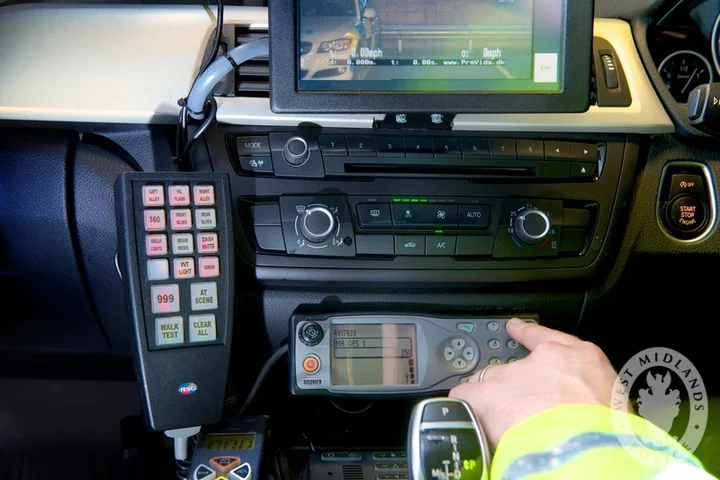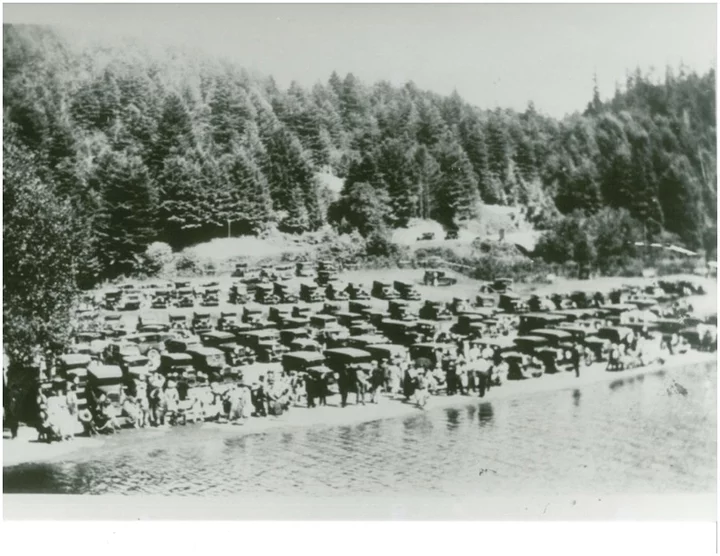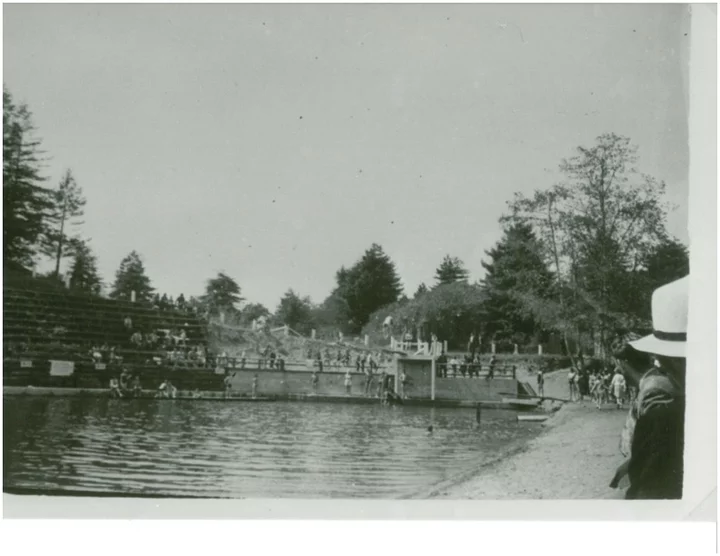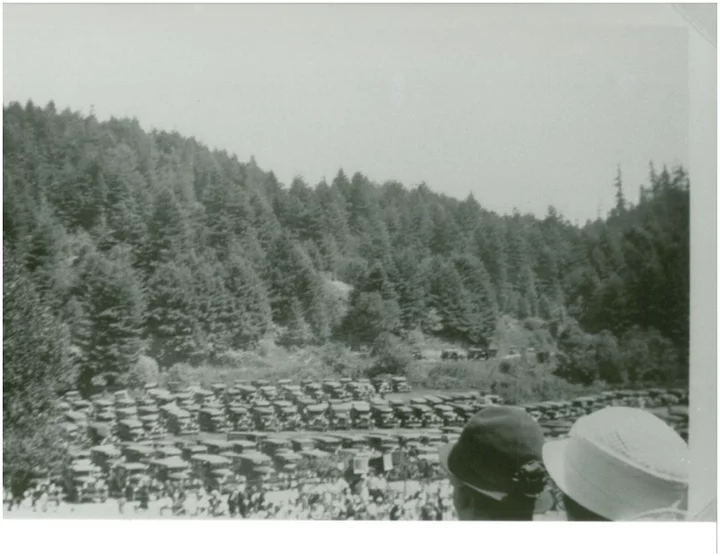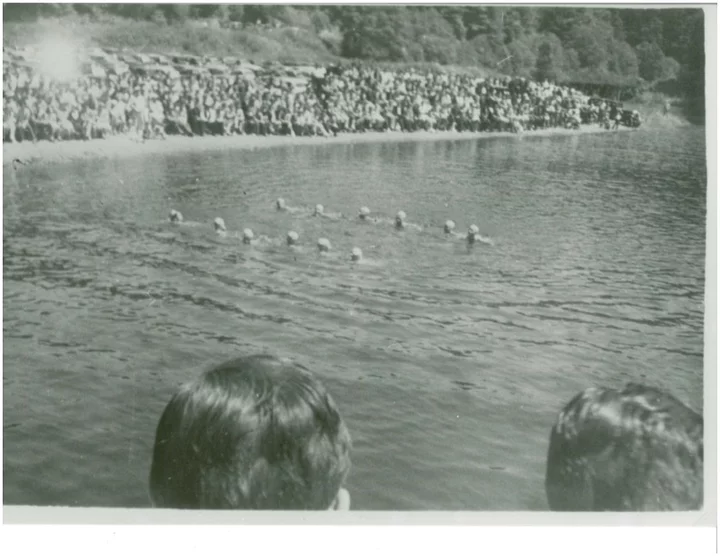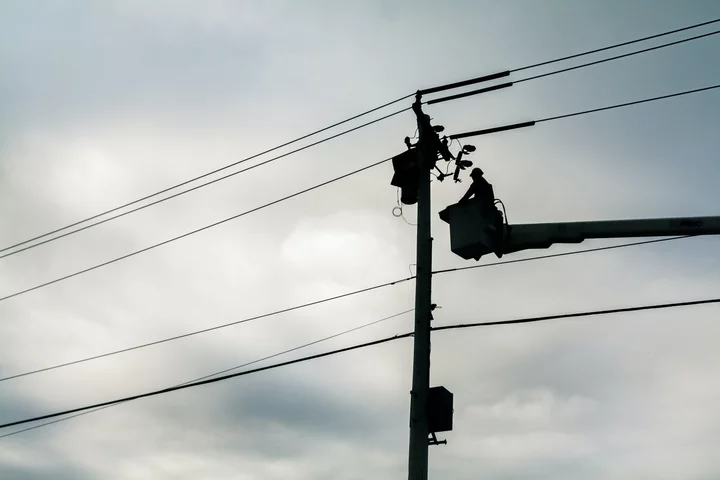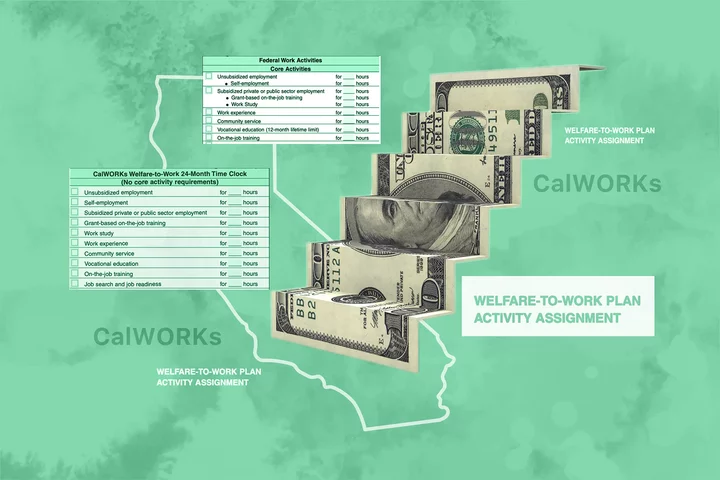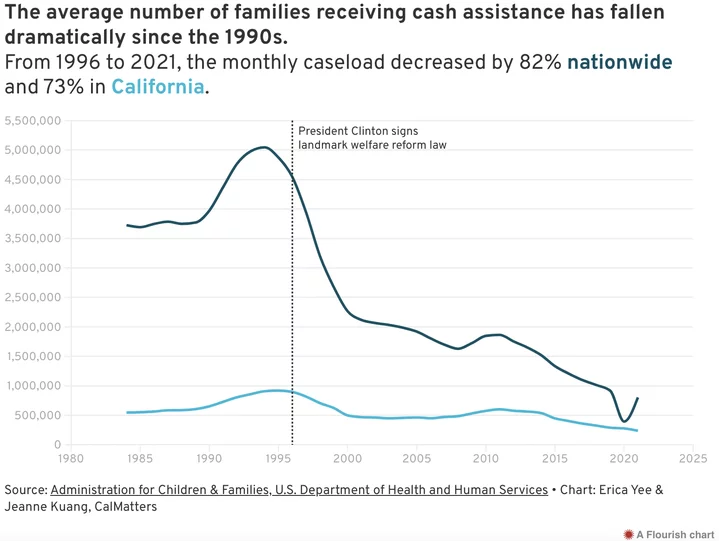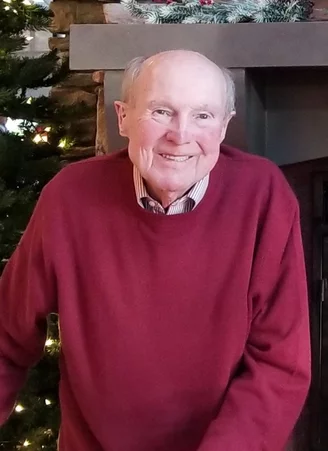Civil Liberties Groups Demand Sheriff’s Office, Other Agencies Stop Sharing License Plate Data With Cops in Anti-Abortion States
Ryan Burns / Friday, June 2, 2023 @ 3:38 p.m. / Government
Many law enforcement agencies now employ Automated Number Plate Recognition (ANPR) or Automated License Plate Reader (ALPR) software. | Creative Commons (CC BY-SA 2.0)
###
Last week, a trio of civil liberties groups sent letters to 71 California police agencies, including the Humboldt County Sheriff’s Office, demanding they immediately stop sharing data from automated license plate readers with law enforcement agencies in other states because, the groups say, “it violates California law and could enable prosecution of abortion seekers and providers elsewhere.”
Automated license plate readers (ALPR) use optical character recognition to “read” license plates, collecting and storing information such as dates, times and a driver’s locations. Law enforcement agencies can also run the acquired plate numbers through various law enforcement databases and alert other agencies when they find a vehicle of interest.
The three civil liberties groups — Electronic Frontier Foundation (EFF), the American Civil Liberties Union of Northern California (ACLU NorCal) and the American Civil Liberties Union of Southern California (ACLU SoCal) — say that a months-long EFF investigation revealed that many California police departments share records of detailed driving profiles out-of-state agencies.
“ALPRs invade people’s privacy and violate the rights of entire communities, as they often are deployed in poor and historically overpoliced areas regardless of crime rates,” EFF Staff Attorney Jennifer Pinsof said in a press release. “Sharing ALPR data with law enforcement in states that criminalize abortion undermines California’s extensive efforts to protect reproductive health privacy.”
The letters sent to law enforcement agencies go into more detail:
Particularly since the Supreme Court’s decision in Dobbs v. Jackson Women’s Health Organization, which overturned Roe v. Wade, ALPR technology and the information it collects is vulnerable to exploitation against people seeking, providing, and facilitating access to abortion. Law enforcement officers in anti-abortion jurisdictions who receive the locations of drivers collected by California-based ALPRs may seek to use that information to monitor abortion clinics and the vehicles seen around them and closely track the movements of abortion seekers and providers. This threatens even those obtaining or providing abortions in California, since several anti-abortion states plan to criminalize and prosecute those who seek or assist in out-of-state abortions.
You can read a sample of the letters issued by clicking here.
According to these civil rights groups, the 71 California agencies that they sent letters to — again, including the HCSO — have shared ALPR data with law enforcement agencies across the country, including ones in states with abortion restrictions, such as Alabama, Idaho, Mississippi, Oklahoma, Tennessee and Texas.
The groups say this practice undermines the state’s efforts to protect reproductive health privacy, specifically, a 2022 law (AB 1242) prohibiting state and local agencies from providing abortion-related information to out-of-state agencies.
Asked to respond to the demand letter, Humboldt County Sheriff’s Office Public Information Specialist Samantha Karges emailed a statement, saying that while only one of the agency’s patrol vehicles is currently equipped with ALPR equipment and technology, it’s an important tool.
“ALPR assists law enforcement agencies in working together to solve crime, because as we know, crime is not confined within jurisdictional boundaries,” Karges’s statement says. “ALPR allows us to partner with out-of-county law enforcement agencies to combat criminal activity, creating a safer community for all.”
While the agency’s use of this technology is limited thus far, Karges says it may soon expand.
“HCSO conducted a test and evaluation of the ALPR equipment over the last year, with three deputies trained and authorized to utilize the technology,” she writes in the statement. “The testing and evaluation ended at the beginning of this year and is being reviewed by Administrative staff for improvements and next steps prior to full implementation.”
She adds that, in compliance with the California Values Act, this data is not shared with federal law enforcement agencies tasked with immigration enforcement.
The civil liberties groups have given law enforcement agencies a deadline of June 15 to comply and respond.
BOOKED
Today: 3 felonies, 9 misdemeanors, 0 infractions
JUDGED
Humboldt County Superior Court Calendar: Friday, Dec. 26
CHP REPORTS
Sea Ave / Hillside Ct (HM office): Trfc Collision-Unkn Inj
ELSEWHERE
Washington Post: Every family has a history. Here’s how to make sure it’s handed down.
The Hill: Will marijuana be legalized, rescheduled in 2026?
The Guardian: Brigitte Bardot, French screen legend, dies aged 91
Get Your Swimming Trunks and Sunscreen! Freshwater Park’s Iconic Swimming Hole is Coming Back This Summer
Isabella Vanderheiden / Friday, June 2, 2023 @ 2:53 p.m. / Drought , Environment , Fish
The Freshwater Park swimming hole. | Photos provided by the Humboldt County Public Works Department.
This summer, the iconic dam-made swimming hole at Freshwater Park will welcome visitors for the first time in three years. If everything goes according to plan, the pool will be ready to accommodate swimmers next month.
There was a host of logistical issues that contributed to the extended closure of the beloved Freshwater Creek pool, including expired permits, drought, the COVID-19 pandemic and unfinished research on water flows in the creek. Andrew Bundschuh, the Environmental Permitting and Compliance Manager for the county’s Public Works Department, told the Outpost that the county had hoped to get the permits in place to install the dam’s fish ladder last summer but those plans fell through due to severe drought conditions.
“Several of the regulatory agencies in the county were concerned that the flows in the creek were too low or too minimal to put the dam in,” Bundschuh said. In May of 2022, a month before the traditional dam installation period, water flow had already dropped to two cubic feet per second. “If we blocked even half of the flow, there wouldn’t be enough flow downstream to provide habitat for the juvenile fish.”
The seasonal dam.
In order to reinstall the dam, the county would need to determine the flow threshold at Freshwater Creek and complete a successful review with various federal and state regulatory agencies, including the California Department of Fish and Wildlife, the California Northcoast Regional Water Quality Control Board, the U.S. Army Corps of Engineers and the National Marine Fisheries Service.
“I worked with the regulatory agencies in looking at historical flow data, which a lot of that information was collected at [Professor Emeritus of Fisheries Biology at Cal Poly Humboldt] Terry Roelofs’ stream gage just upstream of the park on his property,” Bundschuh said. “That data was collected mostly by Salmon Forever along with other flow data provided to me by Fish and Wildlife – which spanned 2002-2013 intermittently – but provided enough data to draw a threshold low flow for dam installation that the agencies agreed with.”
The county looked at historical flow range estimates between May and November and found average flows in Freshwater Creek range from 8.0 to 20.0 cubic feet per second in late May and drop as low as 0.5 CFS in late August before ticking back up in early November.
“Using a conservative approach, a threshold minimal flow needed to be flowing downstream during dam installation will be 1.5 CFS,” according to the project’s description. “This means that flows need to be at least 3.0 CFS prior to installation such that 50 [percent] of flows (at least 1.5 CFS) continue downstream during filling of the pool (roughly 2-4 days). After the dam is filled, whatever the flow is upstream of the dam should be the same amount of flow that is continuing downstream via the overspill section of the dam combined with what is flowing through the fish ladder and back into the creek.”
Colin Anderson, a biologist with Fish and Wildlife, worked closely with the county to “define dates and flow restrictions around the dam installation” and reviewed the findings of the flow analysis to ensure the fish that use the creek as a nursery and seasonal habitat are protected throughout the installation process.
“Certain low flow during drought years would prevent the installation and operation of the dam,” Anderson explained in an email to the Outpost. “Anytime federally listed species are present in an area where in-stream work occurs a biological opinion must be created and approved. In Freshwater Creek we have three listed salmonids, Southern Oregon Northern California Coho Salmon, California Coastal Chinook Salmon, and Northern California steelhead trout.”
A small section of the stream channel will be disturbed during the dam installation process, which is expected to begin in about two weeks. The county will do a little bit of grading to accommodate a crane that will be used to install the flashboards for the dam. Workers will also have to go in and clean out the fish ladder, which often fills up with mud and silt during the winter months.
Simultaneously, the fish will be removed and relocated to an adjacent habitat, Anderson explained. “This is a common practice anytime disturbance inside the stream channel occurs for restoration and construction projects,” he said. “We plan to use seine nets as a first method and switch to electrofishing if necessary.”
“Electrofishing” is a method used by the U.S. Fish and Wildlife Service to temporarily stun fish and other aquatic animals with electricity in order to sample or remove them from specific areas. When performed correctly, electrofishing results in no permanent harm to the fish, which will typically resume swimming about two minutes after being caught.
Once the dam is in place – hopefully by June 25 – the creek will slowly fill the pool, providing deep, cold water ideal for salmonids.
“Large pools are often preferred habitat for Coho salmon,” Anderson said. “In streams that lack large pools or off-channel habitat, restorationists construct this habitat for Coho and other salmonids. We have collected data in many of these habitat restoration projects locally … and found that growth and survival of Coho can be greater than in the creek environment. The large pool formed by the Freshwater Dam may mimic some of these habitats and could provide high-quality habitat for growth and survival.”
Depending on water flows, the pool should be filled by the beginning of July. “The brave kids that can handle the cold will be freezing their toes off swimming in the pool before the Fourth of July,” Bundschuh said.
Freshwater Park’s iconic swimming hole has been sorely missed by Pal Camp attendees in recent years. Stephanie Carter, executive director of the Redwood Discovery Museum which hosts Pal Camp, said the kids have had to make do with other water activities.
“Freshwater Park’s swimming hole has been a part of Pal Camp for almost the entirety of the camp’s 72-year run,” Carter wrote in an email to the Outpost. “The dam’s absence the past few years has had an impact on our campers’ experience, but we made do by substituting our swim days with water play activities every week. The return of the dam means the return of a long-time Pal Camp tradition, and we are so excited to give our campers the full Pal Camp experience again!”
If you’ve ever wondered what the swimming hole may have looked like in the 1930s or the 1950s, respectively, keep scrolling for some cool shots of old-timey cars and synchronized swimming events at Freshwater Park, courtesy of Bundschuh and the Public Works Department.
###
[VIDEO] Sheriff’s Office Releases Security and Body Cam Footage of April Deputy-Involved Shooting in Eureka
LoCO Staff / Friday, June 2, 2023 @ 2:18 p.m. / Crime
Press release from the Humboldt County Sheriff’s Office:
On April 18, 2023, a deputy involved shooting occurred in the Eureka area. When we have a critical incident, we want to release as much information as possible as soon as the investigation allows. Today we are able to share with our community a critical incident video which includes an overview of the April 18th incident and corresponding video.
We previously stated that the responding deputies did not activate their body worn cameras and therefore, no video of the incident was taken. During the investigation, one body worn camera video capturing a portion of this critical incident was located. It is being shared with our community today.
No additional body worn camera video has been located.
The [above] video contains graphic images and explicit language that may be disturbing to some viewers. This video is not suitable for children. Viewer discretion advised.
REVIEW HCSO POLICIES: https://humboldtgov.org/DocumentCenter/View/86838/HCSO-Policy-Manual
###
PREVIOUSLY:
- (LIVE) Sheriff’s Office Press Conference About Yesterday’s Police Shooting on Harris Avenue
- Sheriff’s Office Issues Statement on Harris Street Incident, With Clear Photos of the Suspects and Weapons Recovered
- Eureka Police Officially Arrest One Suspect in April Assault, Police Chase That Resulted in Harris Street Shootout
- Finally Released From Hospital, Second Suspect in April Police Shootout in Eureka Arrested, Charged With Attempted Murder of Officer
CONVERSATIONS: Get Your Lightsabers Ready, Star Wars Nerds! The Forest Moon Festival is Coming to the Region This Weekend and Film Commissioner Cassandra Hesseltine is Here to Tell Us All About it
LoCO Staff / Friday, June 2, 2023 @ 10:23 a.m. / :)
Star Wars nerds rejoice! The Forest Moon Festival is nigh!
This weekend, the Humboldt-Del Norte Film Commission will host the first annual Forest Moon Festival to celebrate the 40th anniversary of Return of the Jedi, the Star Wars film that featured Humboldt and Del Norte counties as the forest moon of Endor, which served as the final battleground between the Rebel Alliance and the Galactic Empire.
There are a whole bunch of events planned across the region, from Redway all the way up to the Smith River. Film Commissioner Cassandra Hesseltine and Eureka Main Street’s Economic Development Coordinator Amanda Kruschke met with the Outpost’s John Kennedy O’Connor to talk about the upcoming festival and quell any concern among unsuspecting Arts Alive goers who may be alarmed by the presence of stormtroopers at the Old Town Gazebo.
Press play on the video above for a little preview of the events planned for this weekend. You can find more information on Forest Moon festivities here.
Taking a Pass on College? California Apprenticeships Offer Another Path
Andrea Madison / Friday, June 2, 2023 @ 7:49 a.m. / Sacramento
Photo by American Public Power Association on Unsplash.
###
After receiving a high school diploma, securing a stable, well-paying job is often priority number one for recent graduates in California who decide against pursuing higher education.
If you’ve determined that college isn’t the best next step, you are not alone. About 37% of students graduating from the state’s public high schools don’t go on to attend college.
When the CalMatters College Journalism Network put out a call for questions about college in California, we heard from one reader who was weighing their options.
“If college isn’t for me, what other options should I consider?” they wrote. “I don’t know much about alternative schools or technical schools after getting a high school diploma.”
One path California’s high school graduates can consider is an apprenticeship. Registered apprenticeships provide options for Californians to get paid while learning a trade — like carpentry or plumbing — from skilled industry professionals, and usually get a job afterward. California’s Department of Industrial Relations has traditionally offered apprenticeship programs in the building trades, such as bricklaying and carpentry, but also trains for careers in healthcare, technology, transportation and firefighting, among others. Many, though not all, are tied to labor unions.
The state is set to spend hundreds of millions of dollars to create half a million apprenticeships by 2029. State officials hope to expand apprenticeships in industries where they historically haven’t been offered, like technology or healthcare .
Doug Henderson, the STEAM director at the Val Verde Unified School District, says the ability to earn money right out of school and the prospect of high wages and benefits are the two biggest motivating factors for his students who opt for apprenticeships.
“A lot of these union jobs, you can be making $150,000 a year pretty quickly if you work your way through,” Henderson said. “So within six to eight years, you can be making six figures a year — you make good money.”
Apprentices typically make a percentage of the wage professionals earn as they work and take courses at a union training center or a local community college. Hourly wages increase as they gain more work experience until they complete the program and start earning professional rates — typically between one and five years.
Someone who maintains and repairs the electrical grid as an apprentice lineman with the California-Nevada Power Lineman Apprenticeship, for example, makes a starting hourly rate of $38.64, or 60% of the $64.40 that professional linemen make. Every six months, their wages increase by 5% until they complete 7,000 hours and a final exam, and begin making the full $64.40.
Starting wages, benefits, program length and application requirements for an apprenticeship can vary widely based on the industry and location within the state.
An apprenticeship with Bricklayers and Tile Layers Local 4 Union, for example, has a minimum hiring age of 17 and no educational prerequisites — but others require a high school diploma, GED, or even a written and oral exam.
Pursuing an apprenticeship starts with choosing career areas of interest, Henderson said. The California Community Colleges offers a career quiz to match individuals with courses and apprenticeship opportunities.
Pre-apprenticeship programs offer a chance to try out some of the hands-on work of different occupations and decide whether or not it’s an industry you’d like to pursue.
It’s important to keep in mind that different occupations have different physical demands, travel expectations and work environments when considering an apprenticeship opportunity, experts say. Those in the construction industry, for example, can be hard on the body.
If a trade school charges pricey tuition, Henderson said, that’s a red flag: Training in apprenticeships is typically free, though sometimes students have to buy their own equipment. There are some possible drawbacks to choosing an apprenticeship over college, he said. Long-term earning potential is generally higher for people who have college degrees, and it’s typically a path for those who want to work for someone else, rather than being their own boss.
“If you want to be the shot caller, you want to have your own business,” he said.
The freedom of working outdoors and the opportunity to travel around Southern California were things Robert Collins appreciated about his apprenticeship as a bricklayer 40 years ago. Now the apprenticeship director at the Brickmasons Apprenticeship Training Trust in La Verne, Collins said he’s excited to see more investment in apprenticeships.
“At one time it was primarily construction trades, apprenticeships, and now they’ve expanded into other industries as well,” Collins said. “It’s not just construction, it’s all over the place now.”
The Department of Industrial Relations’ Division of Apprenticeship Standards website offers a search tool that lists registered apprenticeships in counties throughout the state, along with requirements and contact information. There are more than 90,000 registered apprentices in California, according to the department, a number expected to rise rapidly over the next six years. As part of last year’s budget, the state earmarked $231 million for apprenticeships in 2022, with $480 million more to be spent on expanding apprenticeship opportunities by 2029.
###
Madison is a fellow with the CalMatters College Journalism Network, a collaboration between CalMatters and student journalists from across California. This story and other higher education coverage are supported by the College Futures Foundation.
###
CalMatters.org is a nonprofit, nonpartisan media venture explaining California policies and politics.
Welfare: As US Tightens Work Rules, California Considers Loosening Them
Jeanne Kuang / Friday, June 2, 2023 @ 7:40 a.m. / Sacramento
Illustration by Miguel Gutierrez Jr. | CalMatters; iStock
###
Just as Republicans in Congress are moving to beef up work requirements for people who receive welfare, California lawmakers are moving to do the opposite.
Included in a recent state Assembly budget proposal, and in a bill the Assembly passed on Wednesday, is a plan to remake CalWORKs, the state’s federally funded cash welfare program that requires recipients to work or search for jobs using a list of approved activities.
Under the proposed state changes, recipients would gain greater flexibility to participate in activities such as going to school, domestic violence counseling, addiction treatment or mental health care. The proposal, estimated to cost $100 million, also would lessen financial penalties if recipients violate work rules.
That would make it likely that fewer recipients would get jobs and more likely California would miss a key federal work standard, for which it could be fined.
The goals of the proposed changes are to address practical barriers to employment that CalWORKs recipients – some 340,000 of the poorest families in California – experience, and make it easier for more families to qualify for cash assistance.
And, to prod California’s 58 county social service agencies to carry out the plan, the proposal also would shield counties from potential federal fines.
The efforts come at a fraught moment in a decades-old national debate: Should welfare be a flexible source of emergency aid for families in financial crisis, or an engine to push low-wage single parents to join the workforce?
Congressional Republicans, led by House Speaker Kevin McCarthy of Bakersfield, have pushed to institute stricter welfare work requirements in a bill to raise the nation’s debt ceiling.
Welfare’s work targets
The deal McCarthy struck with President Joe Biden — which the House passed Wednesday and the Senate Thursday night — includes changes in federal welfare rules that would make it harder for California to make its work rate meet federal targets. Failing to meet that work metric could cost the state $185 million out of the $3.7 billion a year it gets in federal welfare grants.
In previous years the federal government has threatened California with fines but never forced the state to pay them, advocates say.
Officials at the California Department of Social Services declined repeated requests for an interview about the state’s welfare policies.
‘We keep people just above drowning. To stabilize families, to allow them to pull themselves up this ladder — this doesn’t do it.’
—Nolo Sullivan, director of Yolo County’s Health and Human Services
For years advocates have pushed to extricate CalWORKs from the strict federal welfare-to-work rules of the 1990s. Those rules touched off dramatic declines in families receiving public assistance and defined the nation’s cash aid system for a generation.
Proponents of work requirements — Republicans and Democrats alike during the 1990s — said people using social safety net programs should be required, or prodded, to work. They said it would ultimately reduce poverty and dependence on public benefits.
A landmark federal law in 1996 began requiring each state to certify that certain percentages of cash aid recipients were working, or participating in a specific list of job search activities, for the state to continue receiving federal welfare grant dollars.
Though welfare rolls fell, poverty didn’t.
Federal reports show declines in welfare enrollment after 1996 did not come with corresponding drops in the number of families poor enough to qualify for welfare. Though caseloads also plunged in the Golden State, today families getting cash aid in California make up nearly a third of the nation’s beneficiaries.
Clashing ideas
Research shows that work requirements led to some increase in employment in the 1990s, but evidence from more recent years is less clear, partly because so many people left the welfare program. A Congressional Budget Office review this year found a “substantial” increase since the 1990s in single mothers who have no income from either work or cash aid.
Advocates have long called work requirements counterproductive and racist, based on stereotypes about “welfare queens” who refuse to work.
California’s cash aid program has been caught between the two ideologies. The state never fully embraced the strict policies of 1996.
While many states slashed welfare rolls — opting instead to use their federal grants on other programs — California continued giving cash assistance. Unlike some other states, California kept cash aid going to children even after their parents’ benefits were cut for violating program work rules.
California also exempts many families from work rules. For those subject to them, the state in 2012 created a more flexible list of activities beyond the strict federal definitions of work.
The state is risking that some recipients won’t count toward the federal work metric. It’s a path other liberal states have taken, said Heather Hahn, a national expert at the Urban Institute.
“States are doing these things that can be seen as workarounds, because working with the (federal rules) feels counter to their goals of helping people achieve economic success,” Hahn said.
A chance at college
More notably, some low-income parents in California receive cash aid while attending college, which counts toward the state’s work rules.
That has been a lifeline for Summer Pratt.
The 42-year-old mother in Grass Valley signed up for CalWORKs upon enrolling at Sierra Nevada College. She had two children to support and no income after getting divorced. She is studying early childhood development and business entrepreneurship — first steps in her plans to open a home-based daycare.
“The money itself has been a tremendous help in allowing me time with my kids and to do schoolwork, and allowing me not to have to go into the workforce yet,” Pratt said.
Advocates and social workers say CalWORKs is far from effective at giving people who must work or search for work a stable, long-term path out of poverty.
“We keep people just above drowning,” said Nolan Sullivan, director of Yolo County’s health and human services agency. “To stabilize families, to allow them to pull themselves up this ladder — this doesn’t do it.”
Yolo County has the highest poverty rate in the state.
To qualify for CalWORKs, a single parent with one child can’t make more than about $1,300 a month. Usually when someone gets into the program, that person is already deep in poverty, given California’s high cost of living, Sullivan said, and many come with significant trauma.
Advocates say recipients face steep barriers to finding and keeping stable jobs that pay enough to raise children. State figures show 45% of the people required to participate in work activities don’t have a high school diploma.
Many need child care and transportation. One in five has experienced domestic violence, and nearly a third report mental health challenges, according to the California Budget and Policy Center.
At work but poor
Cathy Senderling, director of the California Welfare Directors Association, said giving recipients experiencing those challenges a list of required activities can create “adversarial” relationships with social workers.
Parents can be on CalWORKs for up to five years. Those who leave and find work often bring home low earnings.
Just before the pandemic upended the economy, 18,000 former welfare recipients made income from jobs a year after leaving CalWORKs, according to California’s Department of Social Services. In the first three months of 2020, those former recipients earned an average of $5,800 — about $23,000 annually.
Assemblymember Joaquin Arambula, a Fresno Democrat, and advocates are pushing a proposal that loosens many of the state rules in favor of a more individualized approach.
Instead of giving recipients a list of allowable welfare-to-work activities to complete, county social workers would come up with a plan that takes into account recipients’ individual circumstances and addresses needs for child care, mental health care or other social services.
“Today counties are asking recipients to meet certain requirements, and we’re saying recipients should be able to come to counties and say, ‘These are the things I need as a family first,’” said Christopher Sanchez, a policy advocate at the Western Center on Law and Poverty.
Culture shift
The state proposal includes paring back sanctions, which are penalties counties impose on recipients who don’t follow their welfare rules. Sanctions come in the form of cutting off cash aid for the adult; advocates say it’s counterproductive to punish struggling families by further restricting benefits.
Arambula’s proposal would essentially eliminate sanctions if recipients can’t complete their plans because of a lack of child care, or “physical, mental, emotional, or other family circumstances.”
Like all major changes in social services, how this policy gets implemented would depend on the county welfare agencies responsible for the rollout.
Sullivan, in Yolo County, said some caseworkers believe the threat of sanctions is “one of the only tools they have to get people to change their lives.”
He predicted the proposal would run into a cultural divide among county caseworkers, who are split on how rigid and rule-based welfare should be.
“You can’t legislate a culture shift,” he said.
###
CalMatters.org is a nonprofit, nonpartisan media venture explaining California policies and politics.
OBITUARY: Larry Charles Bacchetti, 1938-2023
LoCO Staff / Friday, June 2, 2023 @ 6:56 a.m. / Obits
My beloved husband Larry Charles Bacchetti passed away at Kaiser Hospital
with his wife, Mary, at his side on April 21, 2023.
Larry spent the first 30 years of his life in Eureka. At the age of 10 his mother died unexpectedly. It was a difficult time for his father, with five children to care for. At that time only social security was paid to the head of the household. Larry, at 13, feeling the need to help his father, went to work for Dick Kreps Lumber Yard. At 35 cents an hour, Larry would give half his paycheck to his father. Larry was a fast learner and to this day could figure how many square feet in a board without a computer. Before long Dick would leave him in charge. This helped to build the strong work ethic that Larry had his whole working career. Another, always being on time.
At the age of 16, he went to work in the mail room for the Eureka Times-Standard newspaper. Turning 18, it opened the opportunity to applied for a pressman apprenticeship program at the Times Standard — a career he followed his entire life. During that time, he met and married his wife, Mary Senn, having two children, Gregory & Brenda.
Larry loved ocean fishing with his buddy Ken Van Pelt. Larry also built a smoke house in his backyard. Ask Arnie Millsap or Doug Curtis what happened one night? Or perhaps the Eureka Fire Department? In Eureka, he served in the National Guard, spending two weeks at Camp Roberts every summer. He was an active member of the Eureka 20-30 club and served as President. Also he served as president of Night-Out Dance Club, with Al Sanders his VP. A fun time with dances held once a month at the Moose Lodge.
Things were changing in the newspaper industry. No more afternoon paper. It was becoming a night operation. 1969 finds Larry and family living in the Seattle area and working for the Post-Intelligencer. In 1970 Larry moves back to California and starts his tenure at the San Jose Mercury News. It’s a total night operation. By 1984 he was promoted to pressroom operations manager, a position he held until his retirement on Jan. 1, 2000.
In 1985 Larry & Mary purchased property in Mattole Valley. Larry’s best friend, Jerry Ballard, named the farm the “Bacchetti Fun Farm” — a place to go & have “FUN,” and that we did! Eight couples gathered for 25 years over the Labor Day weekend. A theme was adopted every year and two couples planned all the activities & food for the day. Unfortunately, on March 3, 2021, a fire destroyed the main house, luckily leaving all the outbuildings intact.
Larry loved road trips with adventure at every stop. Baja California was one of his favorites, along with 30 days in New Zealand. As he aged, cruises were on the horizon. Trips included Italy, Panama Canal, Alaska and down the East Coast, to name a few. However, his first real love was at his farm in Mattole Valley. He always had something on the drawing board. A party kitchen, a gazebo, a bunk house and a big barn. He also built a room for Mary’s canned goods, leaving enough room for his wine. It was well insulated, and a good place to cool off when the temps hit 100 or more. He planted a family orchard and in summertime a garden. His tomatoes were the best. The grandkids loved the pumpkins and let’s not forget the apples! Mary canned everything. Time out was walking or swimming in the Mattole River. Returning to BBQ and a cool cocktail under one of their many shade trees.
The final chapter found Larry & Mary living in Lincoln, Calif. — a lovely retirement. community with many things to keep one occupied. We are member of the Italian Club, which has social gatherings once a month. Can’t forget the neighborhood “Mailbox Gang.” Life is never boring!
Larry is preceded in death by his parents, Angelo & Shirley Bacchetti, Stepmother Grace (Ronnie) Bacchetti, Brother Bruce Bacchetti. Survived by Wife Mary of Lincoln & Petrolia, Son, Gregory Bacchetti, Petrolia, Daughter Brenda Criley, San Jose, Brothers Duane of Olympia, WA, Frederick (Judy) Bacchetti, Woodburn, OR and Sister Donna Millsap of Eureka. Grandchildren, Davin Bacchetti (Desiree) Bacchetti, Andrew Criley, and Erica Criley. Great Grandchild Reign Ruiz all of San Jose, CA Granddaughter Christine Kaundart of Canton, GA
Larry will be interred at Ocean View Cemetery in Eureka. A celebration of life is scheduled in Eureka. There will be a celebration of life at the Wharfinger Building on June 23 at 1 p.m. Please RSVP by June 11 if you wish to attend. To do that, or for more information, contact Mary at: bacchetti1@gmail.com.
In lieu of flowers, the family prefers a donation in Larry’s honor to the Mattole Valley Historic Society. See this link, or write to PO Box 144, Petrolia, CA, 95558.
###
The obituary above was submitted on behalf of Larry Bacchetti’s loved ones. The Lost Coast Outpost runs obituaries of Humboldt County residents at no charge. See guidelines here. Email news@lostcoastoutpost.com.

